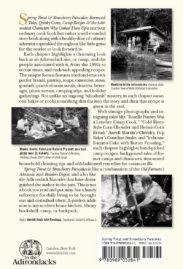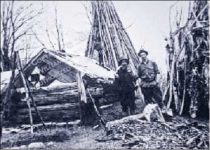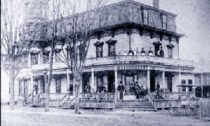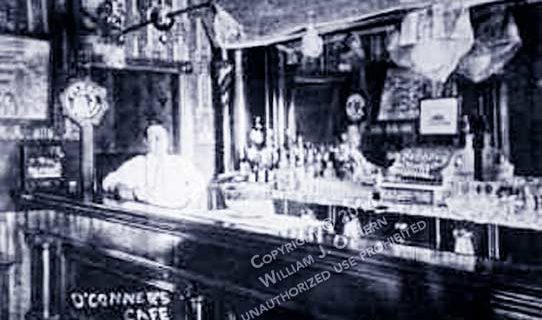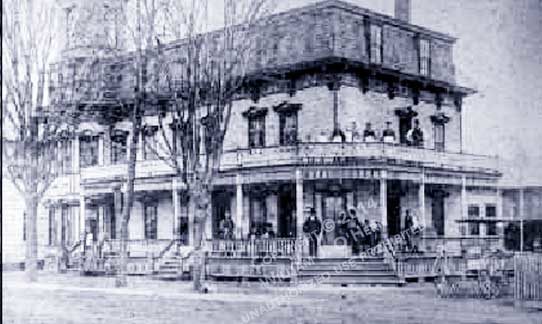ONE WEEKEND, as I was welding a go-devil, a wood splitting axe, at my Adirondack facsimile lean-to, I thought about all the labor it took to cut, split, stack, and dry wood for heating and cooking back in the day. I had thoughts too of the unusual-sounding old recipes I’d read in camp cook- books or heard mentioned. Certainly most dishes had been cooked on a wood-fired kitchen cookstove, although I know for a fact that Doc Latimer, Camp Seward’s renowned chef-owner, relied on a reflector oven, some- times known as a portable stove-top oven, to bake pies and cakes. He’d set it on top of the cast iron lids on Camp Seward’s boxstove, where it would reflect heat. Doc didn’t have a formal camp book of recipes. I learned about his cooking talents from his son, who was also a family physician. Probably because they were doctors, the men were also interested in cures that sound startling today. Who today would even think of putting a mixture of moss scraped from stones and simmered in cream in their mouth for a cold sore?
I would have had no idea what an attack of the ague was, or that wearing a piece of frankincense around one’s neck was the standard cure, except that a friend’s grandfather, Tom O’Donnell, mentioned it in his diary. He wrote about one incident when his friends had arrived to see him. “…I was in the midst of all this when relief came: my regular visitation of shaking ague. Old Pat took over the job of discouraging potato bugs. John Wilsey, who had never believed in so much as the existence of the disease, came in to see me in the grip of the ague, and by good chance at a time when I was putting on one of my more brilliant exhibitions. He looked on in silence at my performance. When the attack was over and the bed had ceased rattling, he said, ‘Gee but that was fun. Do it again, Tom!’”
“…John was asking what started the ague anyhow, and I told him potato bugs. Just one of my casual observations…”
Of course Tom was joking. The violent shakes were brought on by a fever. The cure? Mix one pound of blue vervain stalks and 4 ounces of boneset in with a gallon of good Irish whiskey. One teaspoon three times a day should bring the fever or ague under control.
Another cure out of the past was to wear finely pulverized rock salt be- tween the feet and the stockings for athlete’s foot. The remedy for worms was a teaspoon to a tablespoon of garlic dissolved in Irish whiskey and taken every morning. Wormwood tea or taking a bath in beef’s brine was recommended for rheumatism. A standard cure for the croup was equal quantities of mustard and salt mixed in a half glass of water, or even better, lard and molasses, skunk’s oil and alum in water! One-half pound of lean beef chopped fine added to one-half pint of rain water, a half teaspoon of salt and four drops of muriatic acid was supposed to be good for indigestion and diarrhea, but only after it stood for three hours. Then the clear liquid was taken after it was strained through a cloth. Here is an odd “Corrective for the Stomach:” a small piece of lime soaked in a quart of boiling water with a handful of raisins, with the dish kept covered while decomposition was taking place. A remedy for burns was a poultice made from soot taken from the inside of a stove pipe or chimney and one to three parts lard or fresh butter. This mixture was then spread on linen or muslin and applied to the burn.
The following is taken from an old Malone Cookbook loaned to Genevieve L. Wood by Mrs. Charles Anderson of Gouverneur. The date of publication is not known.
“Cure for Felon:5 Take equal parts of soft soap and best plug tobacco and simmer together. While hot bind on finger. It is frequently necessary for the patient to take a stimulant when this is applied.”



